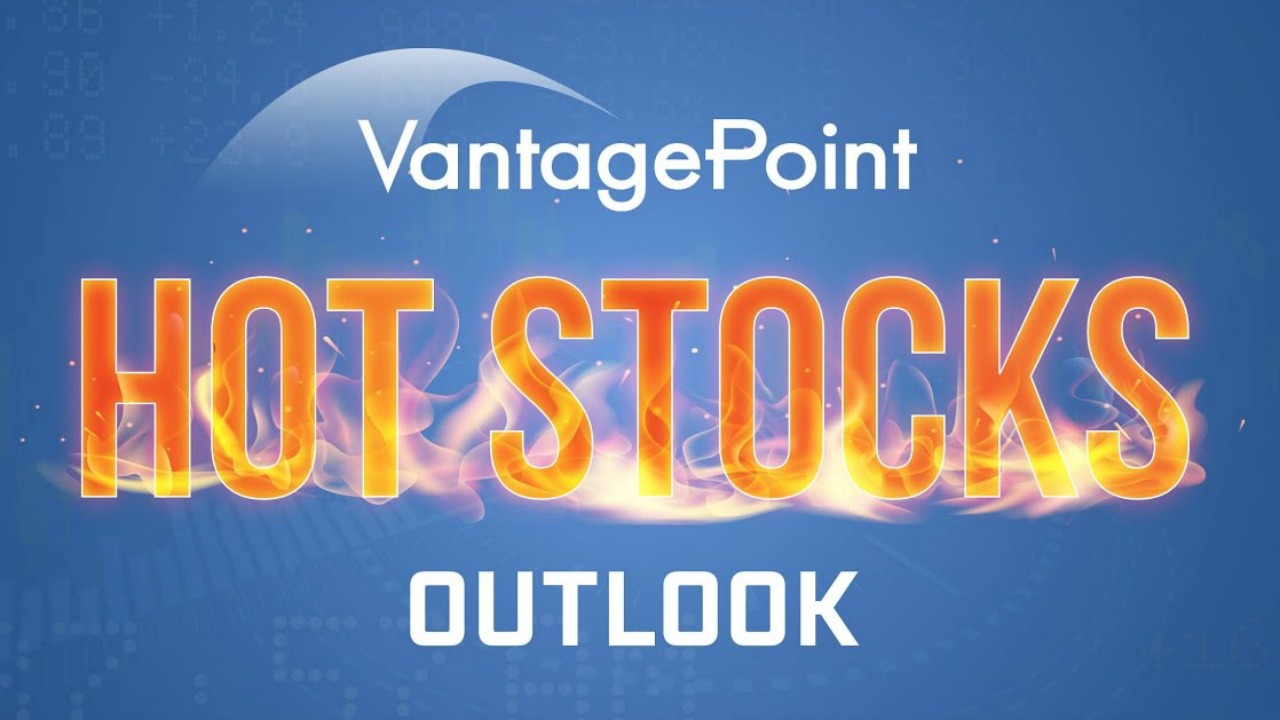Great traders are well versed regarding the ins and outs of financial markets. A fast and effective way that you can quickly establish expertise about trading is by reading the top books about trading the financial markets. We consider this essential to your development. Why? You need to understand all aspects of risk. There are quantitative definitions that affect how assets are priced, but more importantly risk is only understood when you comprehend how its perceptions and application affects your bottom line. There are also ideas on risk related to probabilities which are essential to digest.
Risk is the reason the markets exist, and it is the very thing you must successfully do battle with if you are going to succeed over the long term.
One of the most common questions we receive from Vantagepoint AI customers is which are the most important books that traders should read to get better at trading. We have addressed this topic over the past year with some of our favorite books which you can find here, here and here. In this article, we will provide the top four books which should be in every trader’s library. These following books are our favorite picks because they are practical, realistic, and profound in their insights about trading the markets.
#1 Mark Wizards by Jack Schwager

Jack Schwager has written a total of 6 books about Market Wizards. His first book was published in 1988 and since that time frame he has continued publishing books allowing ordinary traders to see into the extraordinary processes of the world’s greatest traders. The stories are turbulent with massive extremes. The commonality of each trader is that while their processes are extremely different, they are all intensely curious about success and failure in the markets and what makes markets work. These market wizards talk about their best and worst trades as if they were sitting across the table from you. Most importantly they discuss in intimate detail what they learned, and how they learned from their journey.
The most important question in trading when you evaluate your trades is “What did you learn from that experience?” Reading Jack Schwager’s Market Wizards series provides you with an encyclopedia of wisdom in every chapter about how mastery is achieved.
The book does not speak to a single strategy, but through these colorful personalities allows the reader to digest the entire body of knowledge related to trading. The reader can experience firsthand the disasters and victories associated with the understanding of concepts like trade size, risk management, scalping, long term trading, hedging, etc.
These wizards don’t sugarcoat the probability of success. They discuss in depth the psychology of markets and successful trading. Their experiences illustrate how the markets are a persistent contest with the ego. I particularly enjoy the discussions of learning to trade less and learning when to sit on your hands.
Another great aspect of Market Wizards is that Schwager asks these superstar traders for their top trading book recommendations. The majority wholeheartedly recommend Reminiscences of a Stock Operator by Edwin Lefevre, which we wrote about here.
I love to talk to traders about their best and worst experiences because what is more important than the outcome of those individual events is what you learned from the experience. All of Jack Schwager’s books address understanding the importance of this vital trading question.
#2 Technical Analysis of The Financial Markets by John J. Murphy

As you study trading you will undoubtedly come across a chart or indicator which captures your attention. Technical Analysis of the Financial Markets by John J. Murphy is a reference material which includes detailed descriptions of all the important technical indicators which have been devised by analysts to better understand and forecast the financial markets.
Every indicator that has ever been developed by anybody is a derivative of time, volume or price or some combination thereof. As you grow in your understanding of this reality you begin to appreciate how smart traders organize their charts to capture and digest this market-based information.
You will find indicators referenced in this book that will capture your imagination for many years to come. Of particular fascination is how trend analysis is done.
As a side note, John Murphy is also a pioneer in Intermarket Analysis with Vantagepoint Software founder Louis Mendelsohn.
This book has taught thousands of traders the concepts of technical analysis and their application in the futures and stock markets. The second edition features new material on candlestick charting, intermarket relationships, stocks, and stock rotation. This book is essential reading for anyone interested in better understanding and analyzing financial market behavior.
#3 Trading for a Living by Dr. Alexander Elder

Dr. Elder’s background is as equally fascinating as this book. He grew up in former Union of Soviet Socialist Republic (USSR), hated the oppressive system, and longed to escape. But getting out of the country was impossible at the time. He began his college education at the age of 16, graduated from medical school at 22, completed his residency and became a doctor on a ship.
When the Soviet vessel arrived in the Ivory Coast, he jumped ship and sought asylum at the United States embassy. The embassy put him up in a safe house and then on a flight to New York’s Kennedy airport.
He landed at JFK in February 1974, arriving with $25 in his pocket. Elder spoke a smattering of English but did not know a soul in America. The last thing he knew was stocks, bonds and commodities, futures, and options. Two years later his investment education began in earnest when he borrowed a copy of How to Invest in Stocks by Louis Engel and Brendan Boyd from a friend.
Trading for a Living is an investment classic because it clearly discusses the most important aspects of trading and investing, those being trade size and market selection. Elder elaborates in depth about the importance of money management in his teachings. His foundation can be simplified in the statement that great trading is never about how much you make when you are right, but rather by how little you lose when you are wrong. He elaborates on this principle by emphasizing what he calls his 2% and 6% rules.
The 2% rule prohibits a trader from losing more than 2% on any single trade. This rule is often dismissed by new traders as being overly conservative until they have had a horrifying loss. Elder states:
“The goal of trading, in general, is to make money, right? But in order to make money, you need trading capital. Even if you’ve had a series of non-winning trades, the 2% rule is designed to keep you in the game as they say, ‘to trade another day.’”
The rule says to take stock of your account size at the beginning of each month. If your trading account totals $50,000, the 2% rule allows you to risk a total of $1000 per trade. On the first day of every month, you can revise the amount of your “risk allowance” as your trading account changes size. What this rule emphasizes is that you don’t bet all of your account on one trade which is very excellent advice. Instead focus on trade size and live to trade another day.
His follow-up rule is equally important.
6% rule: No new trades will be opened for the remainder of the month if the sum of your losses for the current month, and the risk in open trades, hits 6% of your total account equity.
Studying and applying these two rules is a huge part of any trader’s educational process. There is great wisdom in this book emphasizing the reality that great trading is never about how much you make when you are right but rather how little you lose when you are wrong.
These two trading rules are very profound in that they immediately force discipline upon your trading efforts.
#4 When Genius Failed by Roger Lowenstein

The hardest part of trading for most non-traders is admitting they made a mistake and that they are wrong. Learning how to lose is as important as letting yourself win.
Talk to any seasoned trader and they will tell you that losses are simply the cost of doing business and that taking them regularly is the recipe for long term success. The key to trading is to keep losses manageable and to never argue with the markets.
In this book, When Genius Failed, the author Roger Lowenstein portrays how the smartest people in the room, even those who have received the Nobel Prizes in Mathematics can have super self-destructive tendencies, in their inability to admit failure and take a loss.
Founded in 1993, Long Term Capital Management was hailed as the most impressive hedge fund in the history of mankind. The company had staffed itself with the top quantitative minds in the world.
The company had congregated two Nobel Prize winning economists, a former vice-chairman of the Federal Reserve board and top quant traders in the world. They specialized in dynamic hedging, also known as delta neutral trading which focuses on the mispricing of assets across the derivative markets. This strategy historically had created great returns for the fund’s investors. Yet, despite their intellectual prowess, the company experienced the same fate as the Titanic.
Published by Random House on October 9, 2000, the book puts a fascinating bird’s eye view on the creation, early success, abrupt collapse, and rushed bailout of Long Term Capital Management (LTCM) in 1998. The book reads like a James Bond novel full of suspense, mystery, and intrigue.
LTCM was a tightly held American hedge fund founded in 1993 by Solomon Brothers Bond trader John Merriwether, which had over $100 billion in assets at its height, then collapsed abruptly in August/September 1998. Its fall occurred as the fixed income markets contracted around the world as a result of the Russian Sovereign debt default and several European financial markets faced potential failure.
In August 1998, Russia defaulted on its debt. Three days later, markets all over the world started falling quickly. Investors began dumping Sovereign Debt left and right. Everything was plummeting.
In one day, LTCM lost $553 million, 15 percent of its capital. In one month, it lost almost $2 billion. Those amounts grew exponentially in days due to the fact that the company had taken on trillions of dollars’ worth of risk and had become among the biggest players in the fixed income derivative international markets.
Prompted by deep concerns about LTCM’s thousands of derivative contracts in order to avoid a panic by banks and investors worldwide, the Federal Reserve Bank of New York stepped in to organize a bailout with the various major banks at risk.
The book’s account is largely based on interviews conducted with former employees of LTCM, the six primary banks involved in the rescue, and the Federal Reserve, as well as informal interactions by phone and e-mail with Eric Rosenfeld, one of LTCM’s founding partners.
The events which occurred at LTCM were a precursor to the Great Financial Crisis one decade later. Looking back on this fiasco you can quickly see how that bailout created a precedent to bailout all of the banks in 2008 and the insolvent companies in the current economic environment.
I’d love to hear about your favorite trading books.
What it all boils down to is what are you doing with the knowledge you acquire? What has your performance been like in the markets? How consistent have you been in finding a systematic method of managing risk?
Do you have the tools and ability to find the strongest trends at right time in this economic environment?
How do you go about making sense of the massive disruption that the printing press is creating in the pricing of financial assets?
What is your plan for maintaining your purchasing power as this trend accelerates?
The answers that artificial intelligence brings to the table might surprise you.
Remember, artificial intelligence has decimated humans at Poker, Jeopardy, Go! and Chess. Why should trading be any different?
Intrigued?
Visit with us and check out the A.I. at our Next Live Training.
Discover why artificial intelligence is the solution professional traders go-to for less risk, more rewards, and guaranteed peace of mind.
Think about these things as you protect your hard-earned money. We live in very interesting times.
It’s not magic. It’s machine learning.
Make it count.
THERE IS SUBSTANTIAL RISK OF LOSS ASSOCIATED WITH TRADING. ONLY RISK CAPITAL SHOULD BE USED TO TRADE. TRADING STOCKS, FUTURES, OPTIONS, FOREX, AND ETFs IS NOT SUITABLE FOR EVERYONE.IMPORTANT NOTICE!
DISCLAIMER: STOCKS, FUTURES, OPTIONS, ETFs AND CURRENCY TRADING ALL HAVE LARGE POTENTIAL REWARDS, BUT THEY ALSO HAVE LARGE POTENTIAL RISK. YOU MUST BE AWARE OF THE RISKS AND BE WILLING TO ACCEPT THEM IN ORDER TO INVEST IN THESE MARKETS. DON’T TRADE WITH MONEY YOU CAN’T AFFORD TO LOSE. THIS ARTICLE AND WEBSITE IS NEITHER A SOLICITATION NOR AN OFFER TO BUY/SELL FUTURES, OPTIONS, STOCKS, OR CURRENCIES. NO REPRESENTATION IS BEING MADE THAT ANY ACCOUNT WILL OR IS LIKELY TO ACHIEVE PROFITS OR LOSSES SIMILAR TO THOSE DISCUSSED ON THIS ARTICLE OR WEBSITE. THE PAST PERFORMANCE OF ANY TRADING SYSTEM OR METHODOLOGY IS NOT NECESSARILY INDICATIVE OF FUTURE RESULTS. CFTC RULE 4.41 – HYPOTHETICAL OR SIMULATED PERFORMANCE RESULTS HAVE CERTAIN LIMITATIONS. UNLIKE AN ACTUAL PERFORMANCE RECORD, SIMULATED RESULTS DO NOT REPRESENT ACTUAL TRADING. ALSO, SINCE THE TRADES HAVE NOT BEEN EXECUTED, THE RESULTS MAY HAVE UNDER-OR-OVER COMPENSATED FOR THE IMPACT, IF ANY, OF CERTAIN MARKET FACTORS, SUCH AS LACK OF LIQUIDITY. SIMULATED TRADING PROGRAMS IN GENERAL ARE ALSO SUBJECT TO THE FACT THAT THEY ARE DESIGNED WITH THE BENEFIT OF HINDSIGHT. NO REPRESENTATION IS BEING MADE THAT ANY ACCOUNT WILL OR IS LIKELY TO ACHIEVE PROFIT OR LOSSES SIMILAR TO THOSE SHOWN.









